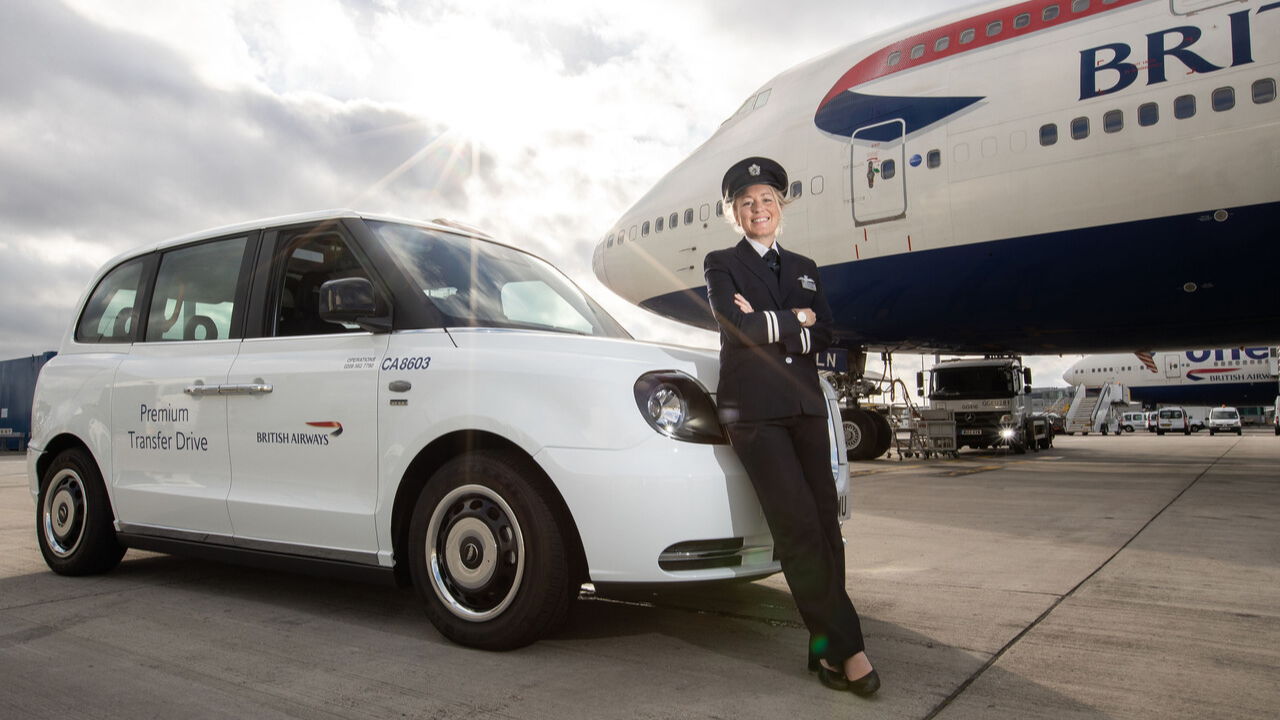In an age of rapid technological advancements and the constant need for more efficient transportation solutions, the concept of Airway Taxi is emerging as one of the most exciting innovations in urban mobility. While flying taxis have long been a staple of science fiction, today, they are becoming a tangible reality. As cities become increasingly congested and ground transportation systems struggle to keep up with demand, Airway Taxi services offer a glimpse into a future where the skies are the new highways.
In this article, we will explore the concept of Airway Taxis, how they work, the benefits they offer, the challenges they face, and what the future holds for this transformative transportation service. From reducing travel times to minimizing traffic congestion, Airway Taxis have the potential to reshape the way we move around cities and beyond.
What are Airway Taxi Services?

Airway Taxis, sometimes referred to as urban air mobility (UAM) services, are small, electric or hybrid-electric aircraft designed to carry passengers over short to medium distances. Unlike traditional helicopters or aeroplanes, these vehicles are typically unmanned or flown autonomously, making them a part of the broader trend toward autonomous transportation. Airway Taxis are designed for vertical takeoff and landing (VTOL), meaning they can take off and land vertically, eliminating the need for long runways.
These vehicles are equipped with multiple rotors or wings, which allow them to lift off the ground and travel at impressive speeds. With the ability to bypass traffic on the ground, Airway Taxis offer an unprecedented level of convenience and efficiency. They can be hailed via mobile apps like traditional taxi services, allowing passengers to request a ride with ease.
How Do Airway Taxis Work?
Airway Taxis use a combination of cutting-edge technology to ensure safe, reliable, and fast transportation. Here’s how they work:
- Vertical Takeoff and Landing (VTOL): The most distinguishing feature of an Airway Taxi is its VTOL capability. Unlike conventional aircraft that require runways, VTOL vehicles can take off and land in small areas, such as rooftops or open fields. This makes them ideal for urban environments, where space is limited.
- Autonomous or Remote Control: Many Airway Taxis are designed to operate autonomously, with advanced sensors, GPS, and AI systems that enable the aircraft to navigate safely. Some models, however, may have human pilots in the cockpit. Regardless of the method of operation, the goal is to offer a smooth, safe experience for passengers.
- Electric Propulsion: Many Airway Taxis are powered by electricity, making them environmentally friendly and reducing the overall carbon footprint of urban transportation. Electric motors are quiet, efficient, and require less maintenance compared to traditional combustion engines, contributing to the long-term sustainability of the service.
- Air Traffic Management: Airway Taxis will operate in controlled airspace, and they will be integrated into the existing air traffic management systems. Advanced communication systems and air traffic control centres will monitor and direct these flying vehicles to ensure they maintain safe distances from other aircraft and avoid potential hazards.
Benefits of Airway Taxi Services
The introduction of Airway Taxis promises to bring a wide range of benefits, both to passengers and the environment. Some of the most significant advantages include:
1. Reduced Travel Time
One of the biggest advantages of Airway Taxis is their ability to significantly reduce travel times. By bypassing traffic and flying directly from point A to point B, passengers can avoid the long commutes and congestion associated with ground transportation. In crowded cities, where traffic can be a major obstacle to timely arrivals, Airway Taxis offers a viable alternative for those who need to get somewhere quickly.
2. Decreased Congestion on Roads
As more people turn to flying taxis, the burden on urban roadways will decrease. Airway Taxis provide a way to decongest cities by taking a portion of commuters out of cars and onto the skies. This reduction in traffic volume can lead to lower carbon emissions, reduced wear and tear on infrastructure, and smoother commutes for those still relying on ground transportation.
3. Environmentally Friendly Transportation
Electric-powered Airway Taxis contribute to reducing the overall carbon footprint of urban transportation. With electric propulsion systems and a commitment to sustainability, these flying taxis help decrease air pollution and provide a cleaner alternative to traditional transportation methods, such as gasoline-powered vehicles or helicopters.
4. Increased Accessibility
Airway Taxis can be deployed in a variety of urban environments, including crowded city centers or more remote areas that lack proper infrastructure. By providing flexible access points such as rooftops, helipads, or specially designed landing zones, Airway Taxis can offer transportation services to underserved areas, improving access to essential services and reducing inequality in transportation access.
5. Innovative Passenger Experience
The experience of travelling in an Airway Taxi promises to be revolutionary. With quiet, smooth flights over cityscapes, passengers can enjoy scenic views and avoid the discomforts often associated with traditional travel, such as long waits in traffic or crowded public transit. With an emphasis on convenience and comfort, Airway Taxis is set to redefine what it means to travel in style.
Challenges Facing Airway Taxis
Despite the clear benefits, the widespread adoption of Airway Taxis still faces several challenges. Some of the most significant hurdles include:
1. Regulatory Issues
The integration of Airway Taxis into the existing transportation landscape will require new regulations and air traffic management systems. Governments and aviation authorities will need to develop frameworks that ensure safety, reliability, and security while enabling innovation. This process will take time, and legal and regulatory barriers could slow down the development and deployment of these services.
2. Safety Concerns
Safety is always a top priority when it comes to aviation, and Airway Taxis are no exception. Ensuring that these autonomous or semi-autonomous vehicles can operate safely in busy urban environments will require advanced technology, rigorous testing, and stringent safety standards. Passengers and regulators alike will want assurance that these vehicles are reliable and capable of handling emergencies.
3. Cost of Implementation
The cost of developing, manufacturing, and deploying Airway Taxis is significant. As the technology matures and more players enter the market, the cost may decrease, but for now, Airway Taxis may remain out of reach for many people due to high prices. Public-private partnerships and government investment in infrastructure will be key to bringing down costs and ensuring the widespread availability of these services.
4. Infrastructure Requirements
For Airway Taxis to become a viable option, cities will need to invest in the necessary infrastructure, such as landing pads, charging stations, and maintenance facilities. Without these crucial pieces, Airway Taxis will struggle to gain traction. Governments, local municipalities, and private companies will need to work together to build the necessary infrastructure to support this emerging mode of transport.
The Future of Airway Taxis
Looking ahead, the potential for Airway Taxis to revolutionize urban transportation is enormous. As technology continues to improve, flying taxis are likely to become more affordable, reliable, and accessible. The dream of a future where people can hop into a flying car to bypass traffic and get to their destination quickly is no longer just a fantasy; it’s becoming an achievable goal.
In the coming years, we are likely to see pilot programs and early-stage services being rolled out in cities around the world. As these services gain traction, we can expect to see more investment in infrastructure, safety protocols, and technology, bringing us closer to a world where flying taxis are a commonplace mode of transportation.
Frequently Asked Questions (FAQs)
1. What is an Airway Taxi?
An Airway Taxi is a small, electric or hybrid-electric aircraft designed for short to medium-distance flights. These aircraft are capable of vertical takeoff and landing (VTOL), allowing them to operate in urban environments without the need for runways.
2. How do Airway Taxis work?
Airway Taxis use advanced technology such as autonomous flight systems, vertical takeoff and landing (VTOL), and electric propulsion to transport passengers quickly and efficiently. They are often operated autonomously or remotely and are part of the urban air mobility (UAM) movement.
3. What are the main benefits of Airway Taxis?
Airway Taxis offer several benefits, including reduced travel times, decreased congestion on roads, environmentally friendly transportation, increased accessibility to underserved areas, and a comfortable passenger experience with scenic views.
4. What challenges do Airway Taxis face?
Challenges include regulatory issues, safety concerns, high costs of development, and the need for infrastructure such as landing pads and charging stations. Overcoming these barriers will be crucial for the widespread adoption of Airway Taxis.
5. When will Airway Taxis become a common mode of transportation?
While Airway Taxis is still in the early stages of development, we are likely to see pilot programs and limited services in the coming years. As technology improves and infrastructure is built, Airway Taxis may become a more widespread mode of urban transportation within the next decade.
You May Also Read: https://buznews.org/rita-bender-interiors/




